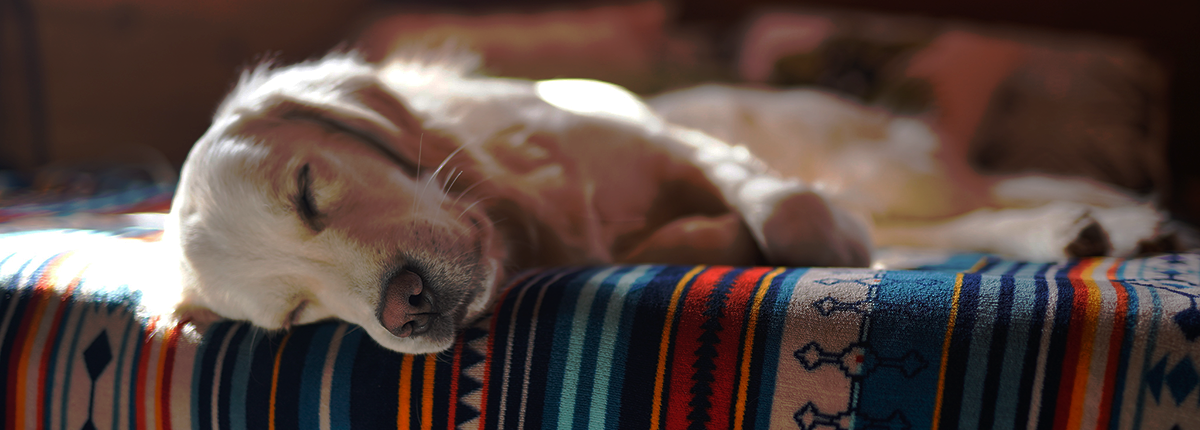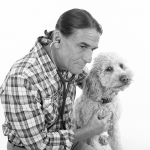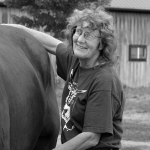
Feeding the Horse with Winter Laminitis
Horses with winter laminitis often have more advanced disease or are older, than the general group of Insulin Resistant horses or those diagnosed with PPID (commonly known as Cushing’s disease). From a western medical perspective, these horses are the most difficult to treat and misunderstood. From a Chinese medical standpoint, these are relatively easy cases to understand and treat.
Looking at the Chinese explanation for what is going on will give us the information we need to understand feeding and treatment. The season of the Kidney meridian is winter, therefore if it is weakened the problems will show up in the wintertime. The Kidney meridian is responsible for the bones, the rear legs, and the adrenal part of the hormonal system. As horses age, the Kidney meridian naturally fades. Horses who have been under a lot of stress in their younger years will have a weaker Kidney meridian at a younger age than those who have not been stressed.
Each horse does have his own pattern of deficiencies, so as with many things in holistic medicine one size does not fit all. A horse can be Kidney Yin and/or Kidney Yang deficient, or Kidney Qi and/or Yin deficient. There are many ways of feeding that are supportive to any of these deficiencies.
Overview of Feeding
The first question to ask yourself is your horse underweight or overweight? If he is overweight, feed restriction and supplementation (see below) to assist with weight loss will be indicated. The most important factor for the overweight horse is that most of the diet be of fiber.
For the underweight horse, it is critically important to provide safe calories, usually in the form of fats or oils along with non-GMO beet pulp or hay pellets. Even with significant laminitis present, the underweight horse can be fed up to a pound of rice bran or a cup of oil two or three times a day. It is optimum to use cold-pressed and organic oils, but often this is cost-prohibitive. The least processed oil is the best and sometimes you can find rice bran oil that is less processed than what is in the grocery store. Coconut oil can also be used, though it does become solid in cold weather so might need some special handling to make it easy to feed. Some of these horses tolerate grains such as barley (which is a cooling food from a Chinese perspective).
Sweet feeds should be avoided at all costs as they are inflammatory and most horses with a metabolically based laminitis cannot tolerate sugar.
Higher levels of protein may be needed in some of the horses with loss weight problems, however, some horses will lose weight if the protein levels are too high. Horses with severe pain burn a lot of calories and breakdown protein just in an effort to stand and move around.
Forage
It is becoming common knowledge that we must pay attention to the amount of carbohydrates present in the hay. If you have access to your winter’s supply of hay you can have it tested at www.equi-analytical.com. It is very possible to have a moderate to poor looking hay be high in sugar and starch, while a pretty green hay may be much lower. Feeding a hay that is high in sugars and starches can be like feeding a sweet feed. If you have changed your hay and you suddenly notice your horse gaining a bit of weight or becoming cresty, the hay can easily be the culprit. Go to the website www.safergrass.org for information about hay testing and carbohydrate content of forage.
Many, but not all, alfalfa hays are higher in protein and lower in sugars. In some cases, alfalfa hay or hay cubes may be helpful as a part of the diet. However, alfalfa is often too rich in calories and many horses have food intolerances or allergies to it.
Check out your grass
Look around your pasture and see if there is any green present. In the middle part of the country where fescue grows, it looks green in the summer and will be eaten if there is not much else, but it has poor taste. After a couple serious frosts it becomes sweet, has more sugar, tastes great and provides excellent nutrition all winter. Horses can founder on it all winter but after it is grazed down, it does not grow back until spring. In Florida, the Bahia grass is nutritious in the summer, but, though green looking in winter, has little nutritive value. Other local grasses can be variable in their winter nutrient content. Get your local county extension agent to help identify your grasses. Weeds can be high in protein and/or carbohydrates, so if you have those growing in the winter check to see if the horses are eating them.
Chinese Food therapy
Omega-3 fatty acids are especially important in the treatment of laminitis. Sources include Hemp seed which moistens the intestines to promote bowel movement, is sweet and neutral. Flax and Chia seeds have similar effects. All of these have anti-inflammatory properties and help correct insulin and glucose usage.
Horses that are warm or inflamed or that your acupuncturist has said are Yin deficient need seeds that are cooling. Barley is a cooling food that can be used when horses do need to be fed grain. Or feed barley in exceedingly small quantities to mix with other supplements. Other cooling vegetables can be fed as treats or as primary feeds, such as: alfalfa, amaranth, asparagus, bran, barley grass, broccoli, buckwheat, cantaloupe, cauliflower, celery, citrus, cucumber, eggplant, flax seed (oil), grass, lettuce, millet, pear, peppermint, persimmon, radish, organic soy bean oil, spinach, strawberry, summer squash, tomato, watermelon rind, wheat grass, zucchini.
Horses that are cold or cool inside need foods that are warm. Warming foods include oats if any concentrates are needed. Warming vegetables include apricot, banana (too sweet for many horses), cherry, cinnamon, coriander, fennel, garlic, ginger, horseradish, kale, kelp, leek, lettuce, mustard greens, oats, olive oil, parsley, parsnip, peach, pumpkin, quinoa, seaweed, sesame seed, spelt, squash, sunflower seeds (may not be as good with the shells) tangerine peel, turmeric, winter squash.
Be creative with your treats by using the lists above. This keeps your horse interested and can support the healing process.
Minerals
One of the most important aspects of any nutritional program for horses is the use of free choice minerals and salt fed separately. Many laminitis horses will eat large quantities of minerals for extended periods of time indicating their need for minerals. Sulfur may be an important nutrient for these horses and can be fed free-choice or as MSM in a supplement.
Other nutrients
Antioxidants
The ideal way to enhance antioxidant status is to feed whole foods and whole food extracts. There is evidence that the synergy of multiple antioxidants far surpasses the feeding of a single compound. Whole foods not only have a full complement of antioxidants, but they also have proteins with intrinsic signals that basically tell the compound where to go in the body.
Vitamin C is an excellent antioxidant and nutrient for collagen support as well as organ and immune system healing. Coenzyme Q 10 seems to one of the best antioxidants for use in the horse, especially in cases of laminitis.
Cinnamon is an herb that has received some research and press about its effectiveness in treating Insulin Resistance. Many supplements now contain cinnamon; some contain large amounts. Cinnamon is an extremely warming herb and is indicated for a cold Kidney Yang deficient horse but is contraindicated in a warm Yin deficient horse. Many laminitis cases have some or a lot of internal heat and can be made seriously worse with cinnamon.
Feeding the winter laminitis case can be challenging but with an understanding of what is going on it is possible to really help these horses. It is most helpful to have an acupuncturist or a Chinese herbalist involved. There are excellent Chinese herbal formulas for the different Yin or Yang imbalances in your horse. Watch Dr. Joyce Harman talk about A Holistic Approach to Equine Laminitis.




